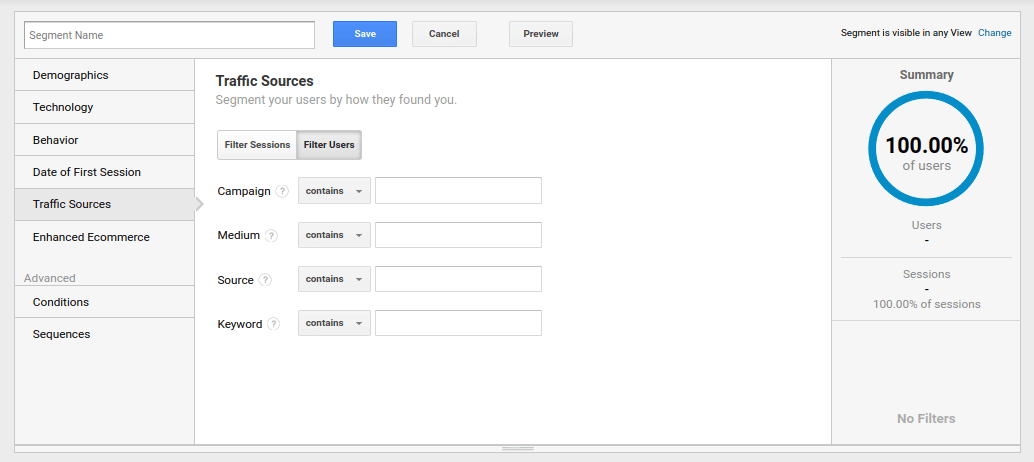Enhancing Your Projects with Remarketing In Google Analytics
Enhancing Your Projects with Remarketing In Google Analytics
Blog Article
Taking Advantage Of Remarketing in Google Analytics: A Comprehensive Guide
Harnessing remarketing in Google Analytics uses companies a tactical edge in connecting to potential clients. The capability to target individuals that have currently interacted with your web site presents a special possibility for customized marketing initiatives. By comprehending exactly how to craft audience checklists and release them properly, companies can dramatically boost their conversion prices. However, the intricacies of establishing and optimizing remarketing campaigns need an extensive understanding of audience segmentation and performance evaluation. This guide will clarify the important steps included in harnessing the full capacity of remarketing in Google Analytics, causing boosted advertising results.
Comprehending Remarketing in Google Analytics
Remarketing in Google Analytics permits organizations to strategically target users who have formerly engaged with their internet site or mobile app. By leveraging information from Google Analytics, businesses can develop customized remarketing checklists based on user actions, such as web pages checked out, actions taken, or specific goals achieved. This effective tool allows companies to re-engage with customers who have revealed passion in their services or items, ultimately raising the likelihood of conversion.
Understanding the different sorts of remarketing techniques is important for a successful project - What Is “Remarketing” In Google Analytics?. Google Analytics uses different alternatives, including common remarketing, vibrant remarketing, and remarketing lists for search ads (RLSA) Each kind serves an one-of-a-kind purpose and can be tailored to fulfill details advertising goals
Additionally, examining the efficiency of remarketing projects is crucial for optimizing results. Google Analytics offers useful insights into the performance of various remarketing strategies, allowing services to make data-driven decisions and improve their targeting approach. By continuously keeping track of and readjusting remarketing initiatives based upon analytics data, companies can maximize ROI and drive success in their advertising and marketing campaigns.
Setting Up Remarketing Projects

After establishing up audience listings, the following action is to link Google Analytics with Google Advertisements. By connecting these 2 platforms, services can flawlessly move audience lists from Google Analytics to Google Advertisements for remarketing objectives. This integration permits for more precise targeting and better project efficiency.
When the accounts are connected, businesses can produce remarketing campaigns in Google Ads using the target market lists formerly specified in Google Analytics. These campaigns can be customized with certain advertisement blog here creatives, messaging, and bidding strategies to successfully re-engage with past site visitors and drive conversions. By adhering to these steps, businesses can take advantage of the power of remarketing to boost their advertising initiatives and increase ROI.
Utilizing Audience Division Techniques

Predefined segments in Google Analytics allow you to promptly assess usual target market classifications like new customers, returning individuals, or individuals that finished a particular goal on your site. Customized segments, on the various other hand, allow you to create unique segments based upon details criteria that are essential to your company objectives. Dynamic remarketing listings automatically adjust based upon user behavior, revealing personalized ads to users that have Check This Out interacted with your website particularly means.
Analyzing Remarketing Efficiency Metrics
Upon evaluating the effectiveness of remarketing projects in Google Analytics, the analysis of essential performance metrics supplies beneficial insights right into audience engagement and conversion rates. By delving right into metrics such as click-through prices (CTR), conversion prices, price per purchase (CERTIFIED PUBLIC ACCOUNTANT), and return on advertisement spend (ROAS), marketers can evaluate the success of their remarketing initiatives. Analyzing these metrics enables marketers to enhance projects, refine target market targeting, and allocate budgets successfully to improve total remarketing efficiency.
Enhancing Remarketing Approaches
When refining remarketing approaches in Google Analytics, concentrating on audience division is paramount for accomplishing campaign success. By splitting your audience right into certain segments based on their behavior, demographics, or passions, you can customize your ads better per team. This targeted approach raises the probability of involving individuals who have currently shown rate of interest in your services or products, resulting in greater conversion prices.
Another essential facet of maximizing remarketing strategies is continually testing and refining your projects (What Is “Remarketing” In Google Analytics?). A/B testing various advertisement creatives, messaging, or offers can aid you recognize what resonates finest with your target market and drives one of the most conversions. By examining the efficiency of these examinations in Google Analytics, you can make data-driven choices to enhance your remarketing efforts further
In addition, leveraging dynamic remarketing can considerably improve your project results. This attribute allows you to show individualized ads to customers based on their past communications with your web site, showcasing items or services they have actually formerly checked out. By providing tailored content to customers based upon their behaviors and rate of interests, vibrant remarketing can help increase involvement and drive conversions.
Verdict
In verdict, utilizing remarketing in Google Analytics is a critical strategy to target individuals that have previously involved with a website. By developing customized audience listings and using target market division methods, services can linked here enhance remarketing advocate increased conversion prices. Analyzing performance metrics and constantly enhancing strategies are important for optimizing the efficiency of remarketing efforts.
Google Analytics supplies numerous alternatives, including standard remarketing, dynamic remarketing, and remarketing lists for search advertisements (RLSA)After setting up target market listings, the following step is to link Google Analytics with Google Advertisements. By linking these two platforms, businesses can effortlessly move audience listings from Google Analytics to Google Advertisements for remarketing purposes.Once the accounts are linked, organizations can create remarketing projects in Google Ads using the audience details formerly defined in Google Analytics.When refining remarketing strategies in Google Analytics, focusing on target market division is critical for accomplishing campaign success.
Report this page